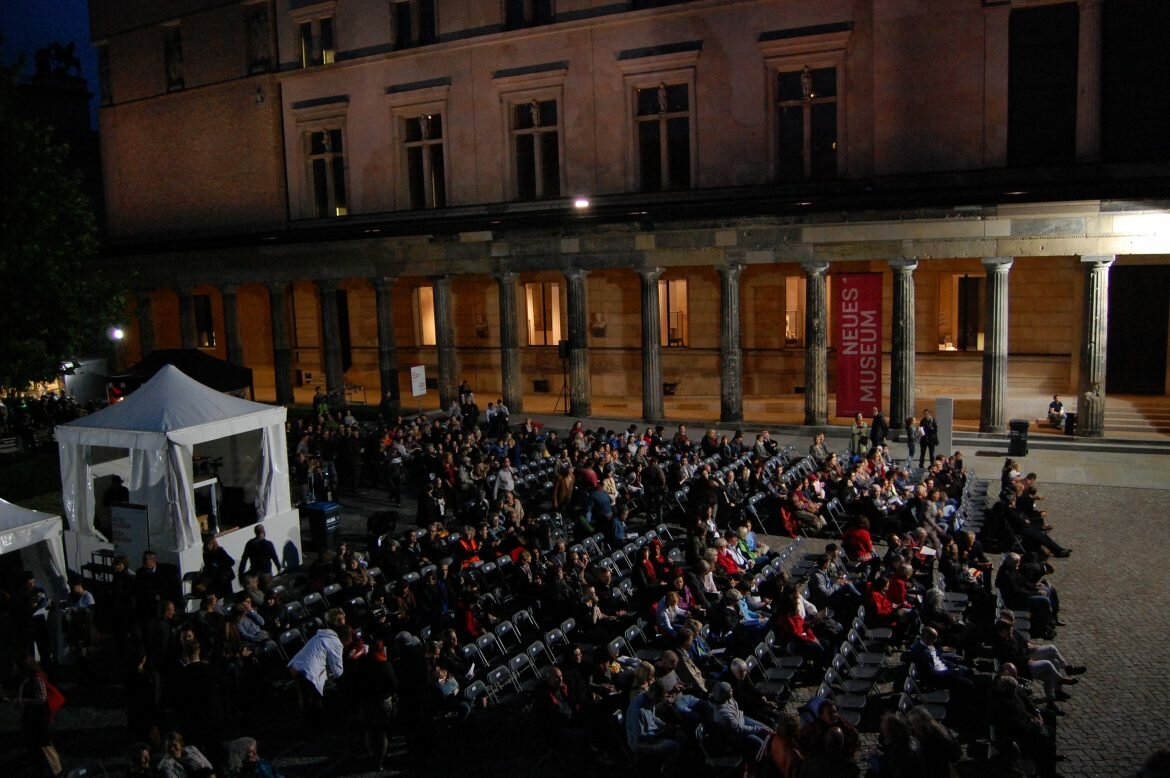How do you repeat history?
That’s what the UFA had to answer for at their screening of The Cabinet of Dr Caligari on Museuminsel this past Saturday night.
After its premiere at this year’s Berlinale, the event marked the first public display of the restored version of F.W Murnau’s Expressionist masterpiece, painstakingly pieced together from the remaining prints, including a newly sourced camera negative from the German Federal Film Archive. Musical accompaniment came from the historic Deutsches Filmorchester Babelsberg, which can trace its roots back to 1918.
For any studio, but particularly one with such a hallowed history, the restoration of classic cinema is a risky game. Not least, because in filmic terms, to restore Caligari is equivalent to retouching Van Gogh’s sunflowers or Rembrandt’s self-portraits — do it wrong, and history will hold you accountable.
Unsurprisingly, then, expectations were high on the final night of this year’s season, which also included screenings of Wegener’s Golem, Wie Er In Die Welt Kam and Wiene’s Faust. The venue revealed something of the UFA’s ambition; the Pergamon Museum and Alte National Gallery towered left and right; familiar bookends to an evening clearly designed with an establishment audience in mind.
But as it happened, an encouragingly young crowd gathered, many of them English speakers like myself, and many who were seeing the movie for the first time. And how lucky we were – because from the first moments of the screening, it was clear that this was no ordinary Caligari.
Previously, the noise, scratches and jumps of Caligari had felt somewhat quaint; a part of its historical charm. It’s when you see a movie such as this digitised that you realise you’ve been making excuses.
To watch Murnau’s Expressionist world unfold in crystal clear quality is quite something. More to the point, it buries the idea once and for all that pre-modern cinema cannot and will not be enjoyed in the way that talkies can (the tide may finally be changing with Grigory Fesenko’s masterful The Tribe). It’s a film I’ve seen multiple times in varying versions, but none felt as seamlessly original or emotionally direct.

Mostly, this was down to the effortless accompaniment from Deutsches Filmorchester Babelsberg. Thumping, sinister beats stalked Werner Krauss’s Dr. Caligari as he menaced across the screen, while Cesare the somnambulist (Conrad Veidt) received a suitably eerie score. As with all good musical accompaniments, you often forgot it was happening.
The restoration itself brought into sharp relief the innovative qualities of the film: its two tone colour palette, Willy Hameister’s painterly, chiaroscuro cinematography, and the astonishing dexterity of the leading cast. As the psychological push-and-pull of Caligari played out, it felt as fresh as ever.
The fact that a film now almost 100 years old can still draw in crowds of ardent fans, fanatics and first-timers is testament not only to the value of its unique vision, but also to the importance of continued efforts to seek out and restore early cinema for modern audiences.
For the UFA and the F.W Murnau Foundation, it’s a long road to vindication, but if tonight was anything to go by, the result will more than justify the means.




